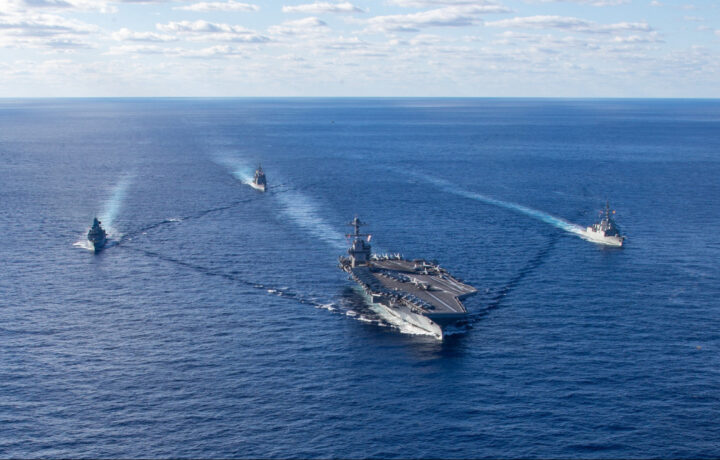In January, U.S. Navy Secretary Carlos Del Toro ordered a comprehensive review to examine national and local causes of the challenges to shipbuilding. The results, which were released on Tuesday, found that five classes of vessels being built for the sea service are now running anywhere from one to three years behind schedule.
That includes the Virginia-class fast attack submarines, the Gerald R. Ford-class nuclear-powered aircraft carriers, and the first-of-a-new-class of Constellation-class guided-missile frigates.
Several factors were at play. The 45-day review found that in the case of the next-generation frigates, the program is running three years late, due in part to a workforce shortage at Fincantieri’s Marinette Marine shipyard in Wisconsin.
As previously reported, U.S. shipyards continue to suffer from poor infrastructure conditions, while the shipbuilding sector has diminished. The entire shipbuilding industry faces an ongoing challenge to attract, train, and retain skilled labor. Since the pandemic, shipyards have seen high retirement rates for older and more skilled workers, and there simply aren’t the new hires to replace those leaving the workforce.
“We still have seen attrition continue in a negative direction in multiple regions, in some places its doubled from where it was at the beginning of the pandemic, in other cases it’s more,” Vice Admiral James Downey told reporters at the Pentagon on Tuesday.
More Than One Program Impacted
Worker shortages and issues with the supply chain are now plaguing the Virginia-class Block IV submarine being built by General Dynamics, and Huntington Ingalls Industries.
The Virginia-class Block V, a related but separate design with more missile launch tubes, is two years behind schedule, the U.S. Navy’s assessment further determined. There is now concern that the delays with the Virginia-class could spill over to the service’s top-priority Columbia-class ballistic missile submarines, which are set to replace the aging Ohio-class, whose remaining boats are to be decommissioned one per year beginning in 2028.
U.S. Navy officials project that the first Columbia-class boat – USS District of Columbia (SSBN-826) – will be delivered 12 to 16 months later than the contractual delivery date of October 2027. The vessel is expect to enter service shortly after its post-delivery testing and training, as the U.S. Navy is obligated to have 10 SSBNs ready to deploy at all times as part of the nation’s nuclear triad that also includes ground-based intercontinental ballistic missiles, and nuclear-capable bomber aircraft.
If the lead boat is delayed, and is unable to take part in its maiden deployment in 2031, the sea service will dip below that 10 SSBN requirement. The Navy is already examining whether it can extend the service life of the Ohio-class nuclear-armed submarines.
The United States Navy may also be forced to keep its Nimitz-class carriers in service longer as well, as the future Gerald R. Ford-class supercarrier USS Enterprise (CVN-80) is expected to be delivered about 18 to 26 months late. That resulted in the Navy also delaying its buys of subsequent flattops CVN-82 and CVN-83, pushing their procurement from FY28 to FY30. Industry officials were quick to warn that the move from the sea service will only cause rough waters for the aircraft carrier industrial base, and could impact smaller suppliers.
Some firms could be forced to lay off workers and/or deprioritize military shipbuilding – and as has been seen, finding workers down the line might not be so easy.
Uncharted Waters
To address these issues, the U.S. Navy may be facing truly uncharted waters that could include utilizing foreign shipyards to address capacity issues. That would allow America’s shipyards to focus on the building of the next-generation of vessels, while maintenance work could be handled by partners on distant shores.
It was also reported earlier this year that greater use of automation could take on tasks that are in high demand, and ensure that critical components are produced on time. That included robot welders, which are also being used in the U.S. Navy’s new Constellation-class frigates.
Fincantieri unveiled MR4Weld (Mobile Robot for Welding), a tracked welding robot it developed with Italian firm Comau, a platform that is already active in the automotive industry. Each robot is reported to be equipped with a welding torch, while the platform employs a video system that can autonomously identify welding joints or be told by a human operator where to weld.
However, it may still take more than robotic welders to fully resolve the issues facing the construction of the U.S. Navy’s future vessels.




